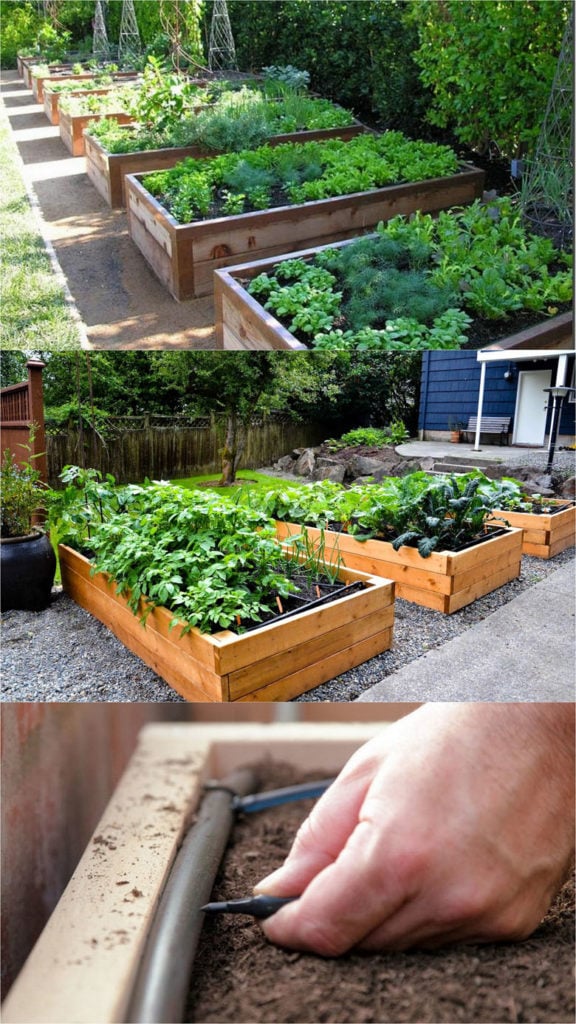DIY Raised Bed Gardening for Veggies

DIY Raised Bed Gardening for Veggies: A Simple Guide
Ever dreamed of having a lush vegetable garden right in your backyard? DIY raised bed gardening for vegetables is your answer! It's like giving your veggies a luxury penthouse with the best views and amenities. Let's dive in and explore how to create your own urban vegetable gardening oasis.
Why Choose DIY Raised Bed Gardening for Vegetables?
Raised beds are like the VIP sections of the garden world. They offer better drainage, easier pest control, and no soil compaction. Plus, they're perfect for those with mobility issues or who want a more organized vegetable garden design.
Getting Started: Planning Your Raised Bed Garden
Before you roll up your sleeves, let's plan. Consider the size, shape, and location of your DIY garden beds. Most veggies need 6-8 hours of sunlight daily, so pick a sunny spot. Also, keep them close to a water source for easy access.
Gather Your Materials: What You'll Need
For raised bed construction, you'll need:
- Untreated wood (avoid pressure-treated wood) or composite boards
- Screws or bolts
- Weed barrier fabric
- High-quality topsoil and compost
- Seeds or seedlings
Tools of the Trade: Essential Equipment
Grab your toolbox and make sure you have these essentials:
- Drill
- Saw
- Gloves
- Tape measure
- Wheelbarrow (for transporting soil)
Building Your Raised Beds: A Step-by-Step Guide
1. Measure and Cut
Measure and cut your boards to the desired length. The ideal size is 4 feet wide by 8 feet long, making it easy to reach all your plants.
2. Assemble the Frame
Using screws or bolts, attach the boards to form a rectangular frame. Ensure it's sturdy – remember, it'll be holding a lot of soil!
3. Line the Bottom
Line the bottom of the frame with weed barrier fabric to prevent grass and weeds from growing into your bed.
4. Fill 'Er Up!
Fill your bed with a mix of high-quality topsoil and compost. Aim for a 50/50 blend to give your veggies the best start.
Easy Gardening Tips: What to Plant
Now comes the fun part – planting! Some easy-to-grow veggies include:
- Lettuce
- Tomatoes
- Cucumbers
- Bell peppers
- Radishes
Check out this guide for more tips on what to plant and how to care for your raised bed garden.
Maximizing Space: Succession Planting
To make the most of your urban vegetable gardening space, try succession planting. This involves planting fast-growing crops (like radishes) between slower-growing ones (like carrots). Once the radishes are harvested, the carrots have room to grow.
Watering Wisdom: Keeping Your Garden Hydrated
Consistency is key when it comes to watering. Aim for about 1 inch of water per week, adjusting for rainfall. Drip irrigation systems are great for raised beds, as they deliver water directly to the roots.
Maintaining Your Raised Bed Garden
Regular maintenance keeps your garden happy and healthy. This includes:
- Weeding regularly
- Adding fresh compost each season
- Rotating crops to prevent disease and depletion of nutrients
Harvesting Time: Reaping the Rewards
The best part of DIY raised bed gardening for vegetables? Harvesting! Enjoy the fruits (and veggies) of your labor in fresh, homegrown meals.
Troubleshooting: Common Issues and Solutions
Gardening isn't always smooth sailing. Here are some common problems and solutions:
- Pests: Use natural repellents like soap sprays or introduce beneficial insects like ladybugs.
- Disease: Ensure proper spacing for air circulation and avoid overhead watering.
- Poor growth: Test your soil pH and adjust with lime or sulfur as needed.
Conclusion
DIY raised bed gardening for vegetables is a rewarding hobby that puts fresh, organic produce right outside your door. With a little planning, building, and planting, you'll be enjoying the tastes of your labor in no time. So, what are you waiting for? Get out there and start your gardening adventure!
FAQs
Q: How deep should my raised beds be? A: Ideally, raised beds should be at least 12 inches deep to allow enough room for root growth.
Q: Can I use pressure-treated wood for my raised beds? A: It's best to avoid pressure-treated wood as it can leach chemicals into the soil. Stick with untreated wood or composite materials.
Q: How often should I add compost to my raised beds? A: Add fresh compost each growing season to replenish nutrients and improve soil structure.
Q: What's the best way to prevent weeds in my raised beds? A: Use a weed barrier fabric at the bottom of your beds and maintain a thick layer of mulch on top.
Q: Can I grow vegetables in raised beds year-round? A: Depending on your climate, you may be able to grow cool-season crops (like spinach and kale) in winter. In colder regions, consider using cold frames or row covers for protection.
0 Response to " DIY Raised Bed Gardening for Veggies"
Post a Comment